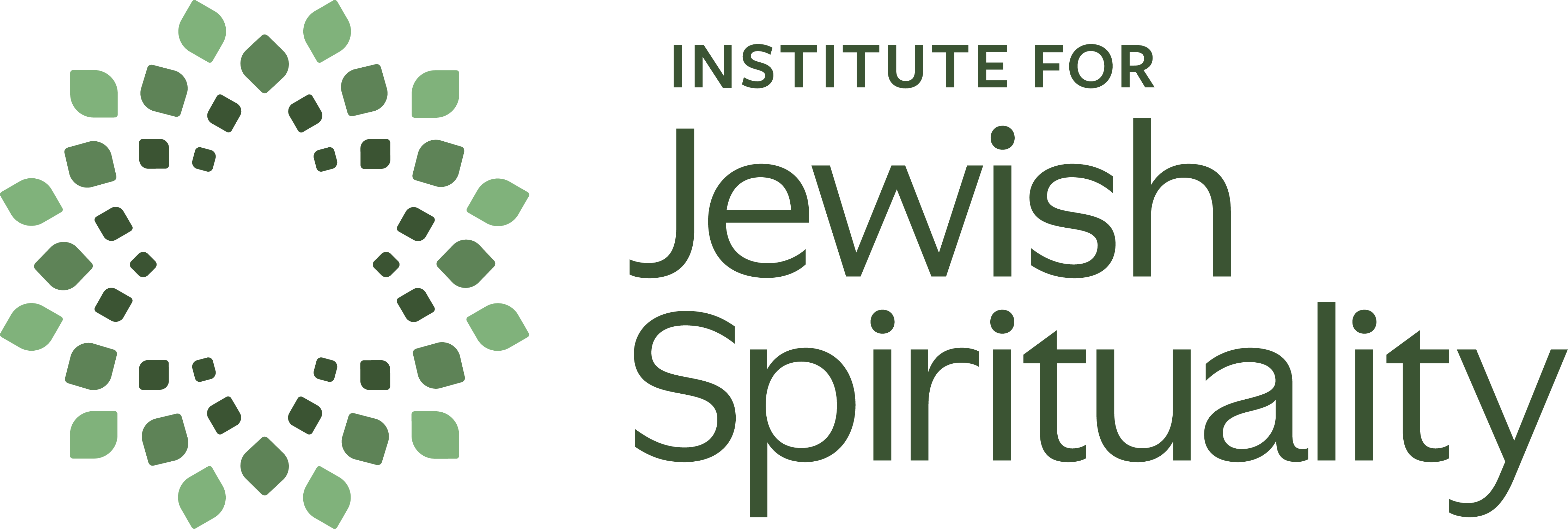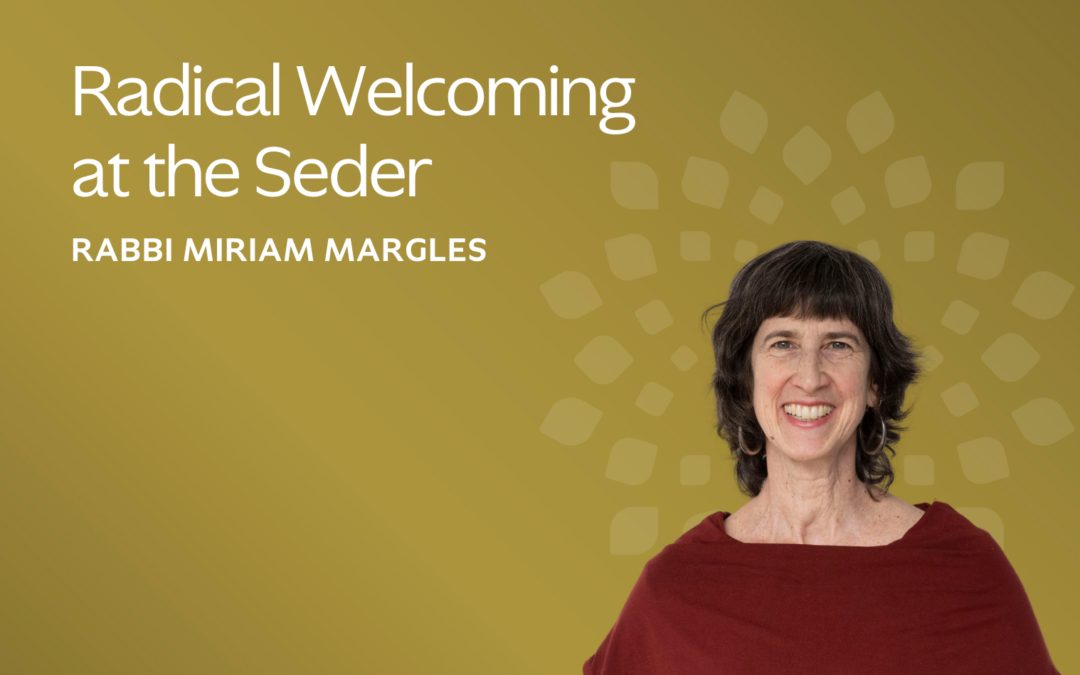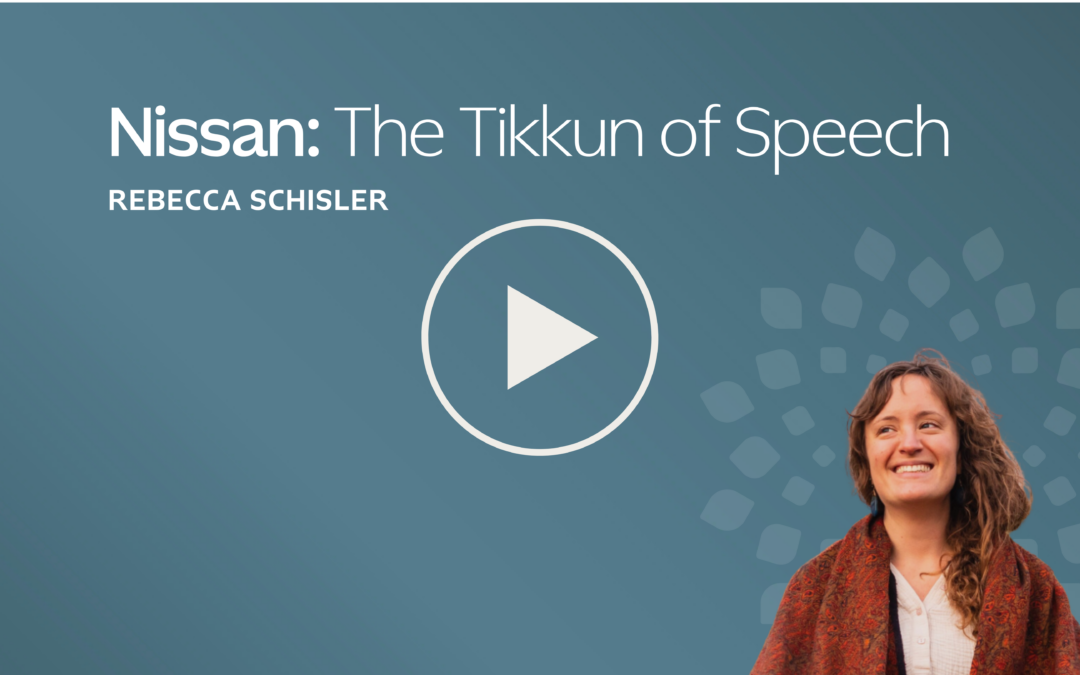
Shemini 5785: Be a Blessing
On Wednesday night I had to run to the drug store. We were out of antihistamine, and, being springtime, the air in Chicago is thick with stuff that makes me sneeze.
There’s a Walgreens around the corner from our house. As I walked up to the entrance, I saw a man holding a sign in Spanish, but headlined with “Please help.” He had three young children with him, the oldest appearing to be no more than 7 or 8.
The drug store was surprisingly busy—maybe a lot of us found our antihistamine supply was low that night?—and I saw a few people walk by the family: stiffly, uncomfortably, hands in pockets.
But then I saw one neighbor, a Jewish man, who walked up to them and asked, “What do you need?” “Food for the baby,” the eldest daughter said. “Ok.” He went inside and, as he shopped for other things, I saw that he bought a gift card for the store, which he gave to them on his way out. Inspired by his example, I did the same.
As I gave the card to the father, several things flashed through my mind at once: Questions, of course, about what led this family to be in this situation, begging outside a Walgreen’s after 9 pm. Questions about where they would sleep that night. Questions about their legal status and how governmental policies and actions were affecting them. Questions about whether in aiding this family my neighbor and I might, naively, be sticking our own necks out.
But what also went through my mind was something I took to heart years ago from Pope Francis, who died this week. Like other people, I find my mind often generates reasons not to give when I see someone asking for money on the street. I imagine they might spend it on something unwholesome, or that I’m being conned. But among the late pope’s most moving teachings was that if someone is asking, we should make it a habit to err on the side of giving. Simply put, giving to someone in need “is always right,” he said.
Parashat Shemini includes a horrible story. For weeks we have read about the Israelites’ construction and inauguration of the Mishkan, a long process that reaches its climax at the opening of the Torah portion. Aaron performs all the prescribed rituals just as they had been commanded. There is perfect alignment between the Divine and human will, between intention and outcome. It’s a scene of blessing, culminating in the people shouting for joy and prostrating themselves.
And then, of course, it all goes wrong. Aaron’s sons, Nadav and Avihu, go off script and lose their lives in the process. Aaron is bereft, silent. Moses, who we also imagine to be shattered at the loss of his nephews, becomes focused on the rules to be followed in this complicated case. In chapter 10 he channels his energy into articulating, in painstaking detail, exactly what sacrifices are to be eaten and where. When, in the course of all this, he “investigates deeply” (darosh darash), he finds that the burnt offering was eaten improperly, and he becomes angry with Eleazar and Itamar, Aaron’s surviving children, castigating them for their failure.
Aaron responds to Moses, “Look, today they brought forward their offense offering and their burnt offering before YHVH, and things of this sort befell me. Had I eaten an offense offering today, would it have seemed good in the eyes of YHVH?” Now it is Moses who is silent: “Moses heard, and it seemed good in his eyes.” Rashi, following other traditional commentaries, reads this as a dialogue about the complex halakhic status of Aaron, who is navigating both his responsibilities to the dead and his special role as High Priest. Robert Alter, whose translation I followed here, offers a more straightforward and, to my mind, compelling reading: “The grieving father asks his own brother whether God could really expect him to constrain himself to ingest meat in this moment of his grief”—that is, to follow the prescribed rules in spite of his natural, human emotional need—”and Moses concedes that Aaron is right.”
There is much we could say here—about regulations and emotions, about the duties of office and the duties and realities of personal mourning, about the varied ways we respond to enormous personal loss. As I reflect on my experience outside the drug store the other night, I find my ruminations hovering around the ways our religious practices can suppress or channel our heart-minds. Sometimes these dynamics can serve us well (for instance, if we’re angry at someone), and sometimes they can serve us poorly (if we excuse our not giving to someone in need by a rule-based tale we tell ourselves). In my own life and in the lives of many others, I have found the structure of Jewish law to be an enormously helpful anchor during the storm of grief. But, like all structures—which are expressions of gevura, limitation and boundedness—these rules can, if misapplied, smother our hesed, the holy font of loving connection.
One other thing went through my mind outside Walgreen’s on Wednesday night: It was the beginning of Yom HaShoah. In the current political environment, I found it hard not to imagine what could potentially befall this family—and what, perhaps, contributed to the banal, if slightly uncomfortable, indifference so many people seemed to demonstrate as they walked by a father and three small children with a cardboard sign that plaintively asked, “Please help.”
The lessons of the Shoah are too many and too numerous to discuss here, at the end of my weekly message. But drawing on the story of Aaron and Moses in our Torah portion, I would suggest that we all can and should be checking in with ourselves: As a people defined by a commitment to law and justice, and as citizens in a democratic republic who therefore each bear a portion of the collective sovereign power, are the laws we live by diminishing or enhancing the image of God? Do our actions, as individuals and as a society, cultivate cruelty or compassion? Are our hearts becoming harder or softer?
The high point of the inauguration of the Mishkan—the high point, perhaps, of the entire Torah—achieved just before everything goes so wrong, is blessing: “Moses and Aaron then went into the tent of meeting. When they came out, they blessed the people; and the glory of YHVH appeared to all the people” (Lev. 9:23). This is a fulfillment of God’s promise to Abraham: “And you shall be a blessing” (Gen. 12:2). The simple question we should ask ourselves all the time is: Is my action, is our action, a blessing in the world?





